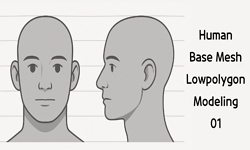The reaction of (COD)PdCl 2 with new C 3 -symmetric tridentate L (COD = 1,5-cyclooctadien; L = 1,3,5- tris(picolinoyloxyethyl)cyanurate) in a mixture of acetone and dichloromethane produces single crystals consisting of unprecedented monometallacyclic...
http://chineseinput.net/에서 pinyin(병음)방식으로 중국어를 변환할 수 있습니다.
변환된 중국어를 복사하여 사용하시면 됩니다.
- 中文 을 입력하시려면 zhongwen을 입력하시고 space를누르시면됩니다.
- 北京 을 입력하시려면 beijing을 입력하시고 space를 누르시면 됩니다.


First Example of Monometallic Palladium(II) Compound with Trans-Chelating Tridentate Ligand: Synthesis, Crystal Structure, and Characterizations
한글로보기https://www.riss.kr/link?id=A108779777
-
저자
Tae Hwan Noh (Jeonbuk National University)
- 발행기관
- 학술지명
- 권호사항
-
발행연도
2023
-
작성언어
English
- 주제어
-
등재정보
KCI등재,SCOPUS,ESCI
-
자료형태
학술저널
-
수록면
110-115(6쪽)
- DOI식별코드
- 제공처
-
0
상세조회 -
0
다운로드
부가정보
다국어 초록 (Multilingual Abstract)

The reaction of (COD)PdCl 2 with new C 3 -symmetric tridentate L (COD = 1,5-cyclooctadien; L = 1,3,5- tris(picolinoyloxyethyl)cyanurate) in a mixture of acetone and dichloromethane produces single crystals consisting of unprecedented monometallacyclic [PdCl 2 (L)]. This cyclic compound arises from trans-chelation of two of three donating pyridyl groups of L, while the third pyridyl group remains uncoordinated. Electrospray ionization mass spectrometry (ESI-MS) data on L exhibited the major peak corresponding to [C 27 H 24 N 6 O 9 + H + ] + . Fast atom bombardment mass spectrometry (FAB- MS) data on [PdCl 2 (L)], however, showed the mass peak corresponding to the L instead of the present palladium(II) compound species, due to the insolubility and dissociation in solution. The physicochemical properties of the present palladium(II) compound were fully characterized by means of infrared (IR) and nuclear magnetic resonance (NMR) spectroscopy, thermal analysis, single-crystal X-ray diffraction (SC-XRD) measurement.
참고문헌 (Reference)
1 Xin-Ran Liu, "“Cage Walking” Synthetic Strategy for Unusual Unsymmetrical Supramolecular Cages" American Chemical Society (ACS) 145 : 8569-, 2023
2 Yu Ge, "Trinuclear manganese and zinc clusters and a dinuclear manganese complex with multiple oxo-bridges: Syntheses, structures, and magnetic properties of the MnII compounds and luminescent property of the ZnII complex" Elsevier BV 242 : 116515-, 2023
3 Jean-Marie Lehn, "Toward Self-Organization and Complex Matter" American Association for the Advancement of Science (AAAS) 295 (295): 2400-2403, 2002
4 Yan-Li Miao, "Synthesis, structures, adsorption behaviour and magnetic properties of a new family of polynuclear iron clusters" Royal Society of Chemistry (RSC) 39 (39): 4893-, 2010
5 Rens Ham, "Supramolecular Coordination Cages for Artificial Photosynthesis and Synthetic Photocatalysis" American Chemical Society (ACS) 123 (123): 5225-5261, 2023
6 Elizabeth R. Jamieson, "Structure, Recognition, and Processing of Cisplatin−DNA Adducts" American Chemical Society (ACS) 99 (99): 2467-2498, 1999
7 C. Marzano, "Solution behaviour and biological activity of bisamidine complexes of platinum(II)" Springer Science and Business Media LLC 12 (12): 477-493, 2007
8 Makoto Fujita, "Self-assembly of ten molecules into nanometre-sized organic host frameworks" Springer Science and Business Media LLC 378 (378): 469-471, 1995
9 Niladri Bihari Debata, "Self-assembled coordination complexes from various palladium(II) components and bidentate or polydentate ligands" Elsevier BV 256 (256): 1831-1945, 2012
10 Soumalya Bhattacharyya, "Self-Assembled PtII8 Metallosupramolecular Tubular Cage as Dual Warhead Antibacterial Agent in Water" American Chemical Society (ACS) 59 (59): 12690-12699, 2020
1 Xin-Ran Liu, "“Cage Walking” Synthetic Strategy for Unusual Unsymmetrical Supramolecular Cages" American Chemical Society (ACS) 145 : 8569-, 2023
2 Yu Ge, "Trinuclear manganese and zinc clusters and a dinuclear manganese complex with multiple oxo-bridges: Syntheses, structures, and magnetic properties of the MnII compounds and luminescent property of the ZnII complex" Elsevier BV 242 : 116515-, 2023
3 Jean-Marie Lehn, "Toward Self-Organization and Complex Matter" American Association for the Advancement of Science (AAAS) 295 (295): 2400-2403, 2002
4 Yan-Li Miao, "Synthesis, structures, adsorption behaviour and magnetic properties of a new family of polynuclear iron clusters" Royal Society of Chemistry (RSC) 39 (39): 4893-, 2010
5 Rens Ham, "Supramolecular Coordination Cages for Artificial Photosynthesis and Synthetic Photocatalysis" American Chemical Society (ACS) 123 (123): 5225-5261, 2023
6 Elizabeth R. Jamieson, "Structure, Recognition, and Processing of Cisplatin−DNA Adducts" American Chemical Society (ACS) 99 (99): 2467-2498, 1999
7 C. Marzano, "Solution behaviour and biological activity of bisamidine complexes of platinum(II)" Springer Science and Business Media LLC 12 (12): 477-493, 2007
8 Makoto Fujita, "Self-assembly of ten molecules into nanometre-sized organic host frameworks" Springer Science and Business Media LLC 378 (378): 469-471, 1995
9 Niladri Bihari Debata, "Self-assembled coordination complexes from various palladium(II) components and bidentate or polydentate ligands" Elsevier BV 256 (256): 1831-1945, 2012
10 Soumalya Bhattacharyya, "Self-Assembled PtII8 Metallosupramolecular Tubular Cage as Dual Warhead Antibacterial Agent in Water" American Chemical Society (ACS) 59 (59): 12690-12699, 2020
11 Carles Fuertes Espinosa, "Secondary Bracing Ligands Drive Heteroleptic Cuboctahedral PdII12 Cage Formation" American Chemical Society (ACS) 145 (145): 9965-9969, 2023
12 Sheldrick, G.M., "SHELXS-2018/3: A Program for Structure Determination" University of Go?ttingen 2018
13 Sheldrick, G.M., "SHELXL-2018/3: A Program for Structure Refinement" University of Go?ttingen 2018
14 Sheldrick, G.M., "SADABS, A Program for Empirical Absorption Correction of Area Detector Data" University of Go?ttingen 1996
15 Timothy R. Cook, "Recent Developments in the Preparation and Chemistry of Metallacycles and Metallacages via Coordination" American Chemical Society (ACS) 115 (115): 7001-7045, 2015
16 Tae Hwan Noh, "Photoreaction of adsorbed diiodomethane: halide effects of a series of neutral palladium(
17 Biao Yang, "Photoluminescence enhancement by controllable aggregation and polymerization of octanuclear gold clusters" Royal Society of Chemistry (RSC) 57 (57): 5770-5773, 2021
18 A. Shanmugapriya, "Palladium-mediated C–O bond activation of benzopyrone in 4-oxo-4H-chromone-3-carbaldehyde-4(N)-substituted thiosemicarbazone: synthesis, structure, nucleic acid/albumin interaction, DNA cleavage, antioxidant and cytotoxic studies" Royal Society of Chemistry (RSC) 45 (45): 20227-20240, 2021
19 Hong Yan, "Mono-, di- and tetra-nuclear p-cymeneruthenium complexes containing oxalato ligands" Royal Society of Chemistry (RSC) (22) : 4345-4350, 1997
20 Timothy R. Cook, "Metal–Organic Frameworks and Self-Assembled Supramolecular Coordination Complexes: Comparing and Contrasting the Design, Synthesis, and Functionality of Metal–Organic Materials" American Chemical Society (ACS) 113 (113): 734-777, 2012
21 Zijian Guo, "Metals in Medicine" Wiley 38 (38): 1512-1531, 1999
22 Scott J. Dalgarno, "Metallo-supramolecular capsules" Elsevier BV 252 (252): 825-841, 2008
23 Soumen De, "Metal-coordination-driven dynamic heteroleptic architectures" Royal Society of Chemistry (RSC) 39 (39): 1555-, 2010
24 C.H. Chen, "Metal chelates as emitting materials for organic electroluminescence" Elsevier BV 171 : 161-174, 1998
25 S. Russell Seidel, "High-Symmetry Coordination Cages via Self-Assembly" American Chemical Society (ACS) 35 (35): 972-983, 2002
26 Haeri Lee, "Halogen effects on photoluminescence and catalytic properties: a series of spatially arranged trimetallic zinc(
27 Dawei Zhang, "Functional Capsules via Subcomponent Self-Assembly" American Chemical Society (ACS) 51 (51): 2423-2436, 2018
28 Constantina Papatriantafyllopoulou, "Filling the gap between the quantum and classical worlds of nanoscale magnetism: giant molecular aggregates based on paramagnetic 3d metal ions" Royal Society of Chemistry (RSC) 45 (45): 1597-1628, 2016
29 Niladri Bihari Debata, "Development of coordination driven self-assembled discrete spherical ensembles" Elsevier BV 387 : 273-298, 2019
30 M. S. Kharasch, "Coördination Compounds of Palladous Chloride1" American Chemical Society (ACS) 60 (60): 882-884, 1938
31 Adoración Gómez Quiroga, "Contribution to the SAR field of metallated and coordination complexes" Elsevier BV 248 (248): 119-133, 2004
32 Guido H. Clever, "Cation–Anion Arrangement Patterns in Self-Assembled Pd2L4 and Pd4L8 Coordination Cages" American Chemical Society (ACS) 50 (50): 2233-2243, 2017
33 Peter D. Frischmann, "Bright Fluorescence and Host–Guest Sensing with a Nanoscale M4L6 Tetrahedron Accessed by Self‐Assembly of Zinc–Imine Chelate Vertices and Perylene Bisimide Edges" Wiley 54 (54): 7285-7289, 2015
34 Miguel A. Fuertes, "Biochemical Modulation of Cisplatin Mechanisms of Action: Enhancement of Antitumor Activity and Circumvention of Drug Resistance" American Chemical Society (ACS) 103 (103): 645-662, 2003
35 Sriparna Ray, "Anticancer and Antimicrobial Metallopharmaceutical Agents Based on Palladium, Gold, and Silver N-Heterocyclic Carbene Complexes" American Chemical Society (ACS) 129 (129): 15042-15053, 2007
36 Shreyata Dey, "Accessing Heteroannular Benzoxazole and Benzimidazole Scaffolds via Carbodiimides Using Azide–Isocyanide Cross-Coupling as Catalyzed by Mesoionic Singlet Palladium Carbene Complexes Derived from a Phenothiazine Moiety" American Chemical Society (ACS) 8 (8): 11039-11064, 2023
동일학술지(권/호) 다른 논문
-
- 사단법인 한국질량분석학회
- J. Varshini premakumari
- 2023
- KCI등재,SCOPUS,ESCI
-
- 사단법인 한국질량분석학회
- Mingyan Ma
- 2023
- KCI등재,SCOPUS,ESCI
-
- 사단법인 한국질량분석학회
- Young Beom Kwak
- 2023
- KCI등재,SCOPUS,ESCI
-
- 사단법인 한국질량분석학회
- Jun Sang Yu
- 2023
- KCI등재,SCOPUS,ESCI




 DBpia
DBpia






